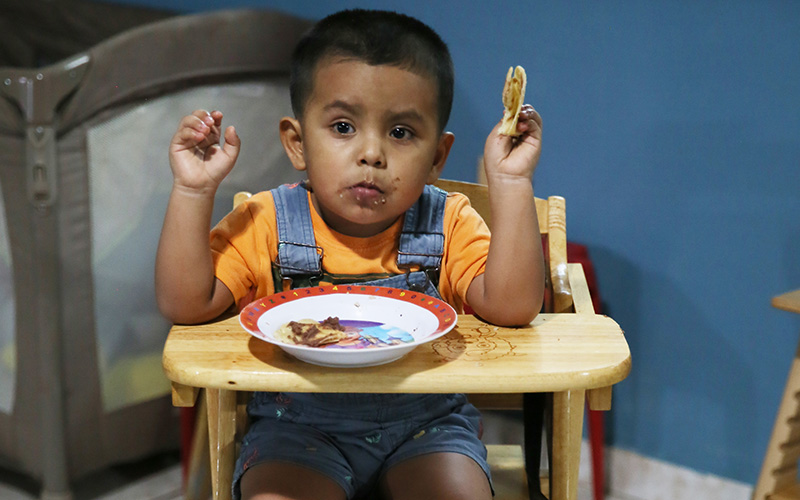Why Children in Latin America and the Caribbean Face Malnutrition and How You Can Help
Malnutrition harms children in lasting ways. It slows growth, weakens the immune system, and makes learning difficult. Across Latin America and the Caribbean, many families face extreme poverty that leaves their children without the nutrition they need. Food For The Poor works with local partners to provide immediate relief and lasting programs that prevent malnutrition. In this blog we will show how one nutrition center supported by Food For The Poor donors in Honduras is doing the lifesaving work to prevent malnutrition.
What Is Malnutrition?
Malnutrition happens when the body does not get the balance of nutrients it needs to stay healthy.
• Undernourished means a child is not eating enough food at all.
• Malnourished means a child is lacking vitamins, proteins, and calories needed for proper growth.
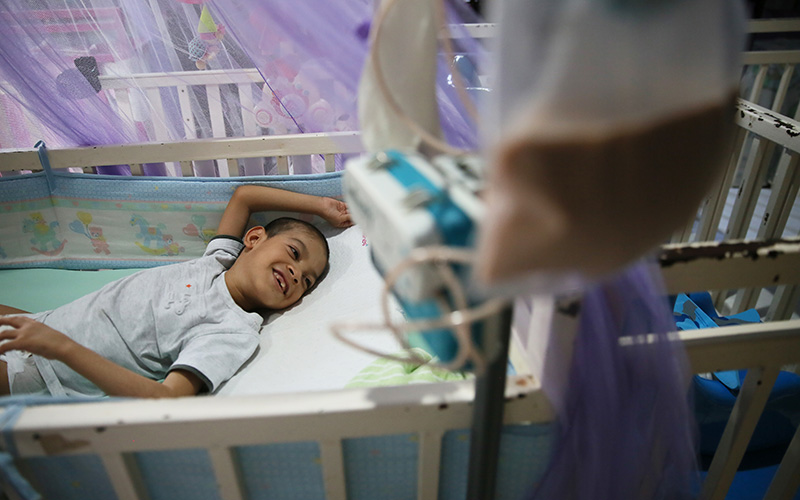
A real-world example of malnourished versus undernourished:
• A child who eats only bread each day may not be undernourished because they are getting calories, but they are malnourished because they lack protein and vitamins.
• A child who has no food for a full day is both undernourished and malnourished.
Why children living in poverty become malnourished so easily
Children living in multidimensional poverty face many challenges that make them especially vulnerable to malnutrition.
• Food insecurity: Families often cannot afford or find enough nutritious food.
• Unsafe water: Contaminated water leads to diarrhea and infection, which drain nutrients from a child’s body.
• Limited healthcare: Without regular check-ups or treatment, illnesses last longer and recovery slows.
• Lack of nutrition education: Families may not know how to prepare balanced meals with the food available.
• Economic instability and natural disasters: Hurricanes, droughts, or price increases reduce food access even further.
When these challenges combine, a child’s body cannot develop properly, leaving them weak and at greater risk of serious illness.
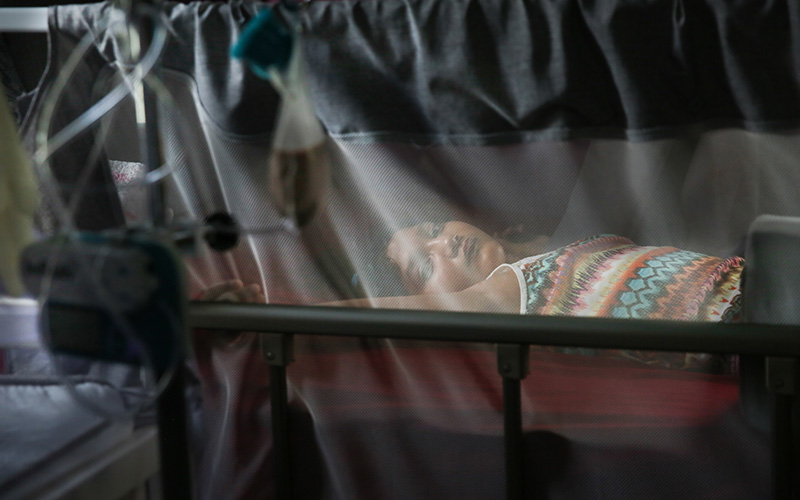
Kwashiorkor and Marasmus: Two Types of Severe Malnutrition
Malnutrition takes different forms. Two of the most severe are kwashiorkor and marasmus.
Kwashiorkor
• Cause: A severe lack of protein in the diet
• Signs: Swollen belly, puffy face, thin arms and legs, and changes in hair texture or color
• Explanation: Without enough protein, the body cannot keep fluids in balance. Extra fluid builds up in tissues, which causes swelling.
Marasmus
• Cause: A severe lack of protein in the diet
• Signs: Swollen belly, puffy face, thin arms and legs, and changes in hair texture or color
• Explanation: Without enough protein, the body cannot keep fluids in balance. Extra fluid builds up in tissues, which causes swelling.
Marasmus
Kwashiorkor is linked to protein deficiency. Marasmus is linked to overall lack of food.
Both require careful treatment, and recovery takes time.
A Place of Healing: Las Mercedes Nutrition Center, Honduras
In Honduras, the Las Mercedes Nutrition Center offers children a chance to recover from severe malnutrition.
• The ministry began in 1974 after Hurricane Fifi devastated the country. A Jesuit priest, moved by the number of children abandoned during the storm, opened the first small shelter on church grounds.
• The current center has been open since 2000. It now cares for children sent by hospitals and child protective services, offering specialized recovery.
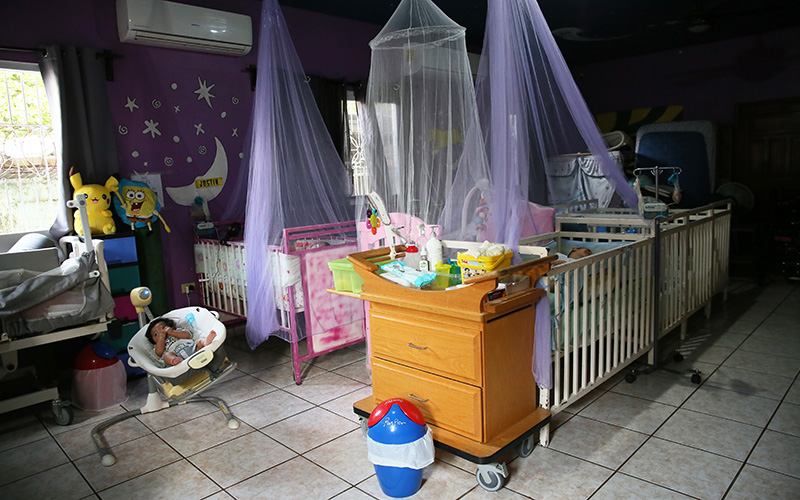
Director Belinda Orellana has served at Las Mercedes for two years. She says:
“If we didn’t have support we would have to close. There are few malnutrition or nutrition centers in Honduras. Without support, the children would have to go back to their families and hope to survive.”
Each year, this center admits 18 to 20 children with severe malnutrition or undernutrition. Recovery takes eight to nine months. At full capacity, the center can accommodate 24 children. Currently, 14 are receiving intensive care.
The children are fed with specialized formulas, including Compleat, which is delivered through gastric buttons for those unable to eat on their own. Five children currently receive food this way. Donated Infinity Pumps make feeding safer and less exhausting for the nurses, who once had to stand for 45 minutes pushing blended food through a syringe.
The center’s environment blends medical care with warmth: colorful posters mark birthdays, crucifixes hang above each door, and children play on rugs donated through Food For The Poor’s Gifts In Kind program.
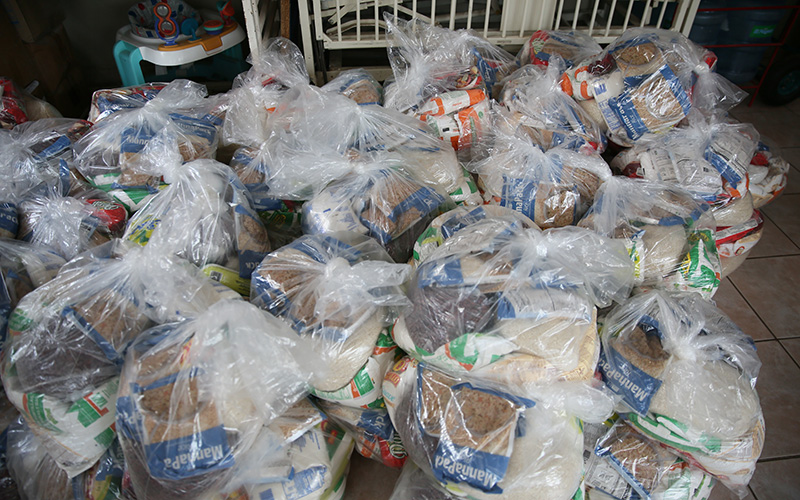
Orellana emphasized the role of families in recovery: “Once a child reaches their ideal weight the family comes in and learns about nutritious food and meals, and breast feeding. Being poor doesn’t mean you have to have bad practices,” she shared.
Children and families are monitored for a full year after leaving the center. Local prevention programs, run in partnership with a Catholic church in the community, now serve 49 children. Remarkably, 80 percent of those children were kept from falling into malnutrition.
Orellena’s faith guides her daily work: “First, I give thanks for the day and I pray protection over the caregivers, I pray for the children, and I give thanks for the donors. I realize how important the donors are and I pray for them,” she said. She adds: “I can feel how God is present in a bag of rice or a bag of beans.
Signs of Malnutrition in Children
Families and caregivers can often recognize malnutrition through physical and behavioral changes.
Look for:
• Stunted growth or short height for age
• Thin arms and legs with a swollen stomach
• Dry skin, brittle hair, or hair color changes
• Frequent illness or long recovery times
• Fatigue or lack of energy
• Trouble focusing in school
Early detection helps prevent lifelong health issues.
How Food For The Poor responds to malnutrition
Food For The Poor combines relief aid with long-term solutions to prevent malnutrition across Latin America and the Caribbean.
Your support helps provide:
• Nutritious school meals so children can develop and learn with energy.
• Clean water projects that reduce disease and improve health.
• Agricultural training that gives families the skills to grow food for balanced diets.
• Healthcare support that catches malnutrition early.
• Emergency response after disasters, delivering food and medicines quickly.
These efforts reach children in places like Honduras, Haiti, and Guatemala, where families face daily struggles with food insecurity.
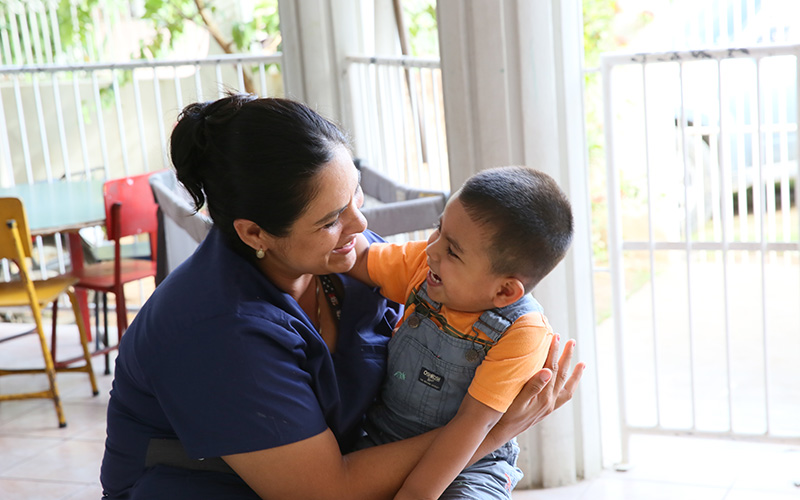
How You Can Help
You can respond today in three meaningful ways:
1. Check out Champions For The Poor: Create your own campaign to encourage your friends and family to support a cause that means a lot to you.
2. Visit FoodForThePoor.org: Learn more about projects, see updates from the field, and find the giving option that matches your heart.
3. Be an advocate: Share stories on social media with friends, family, or your church to raise awareness and expand Food For The Poor’s reach.
Your involvement provides hope and healing for children who might otherwise go without care.
Conclusion
Malnutrition continues to affect children across Latin America and the Caribbean, but the story of the Las Mercedes Nutrition Center in Honduras shows that change is possible. Las Mercedes is just one of many nutrition centers that Food For The Poor supports. Because of donor support, children in these centers are regaining their strength, families are learning healthier practices, and prevention programs are keeping little ones from ever reaching a malnutrition crisis point.
Food For The Poor remains committed to working alongside communities, hospitals, and churches to provide food, clean water, and medical care. Each gift of support matters and each act of advocacy spreads awareness.
Visit foodforthepoor.org today to learn more about how your support can protect children from malnutrition.

